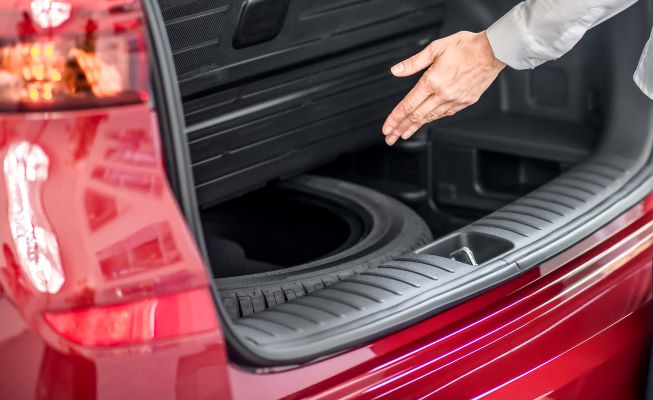The ins and outs of Spare tires

You’ve probably seen them on the road or even in the back of your car. Spare tires are a crucial part of any vehicle in the event of a blowout or a flat tire. They are essential for getting you back on the road in a pinch and can also help you to avoid costs associated with hooking up your vehicle and bringing it to the repair shop. While spare tires are helpful for getting you around after a tire incident, they ARE NOT a permanent solution for long term driving. This then raises the question of “how far can you drive on a spare tire” and “how do I know if my spare tire is in good shape to ride on?”. These and other such questions will be covered in today’s topic.
Spare tires are usually located either under the floor of the trunk or under the backside of a car, and are meant to provide temporary transportation to bring you home or to a mechanic to change for another regular tire. Spare tires differ from regular tires in a few ways. For starters, they don’t provide as much traction and stability as a regular tire does due to the tread design and size. The size of a spare tire is smaller than a regular tire to accommodate for the space where it is kept. Finally, the PSI, or Pounds per Square Inch, is significantly higher than regular tires, making it able to support the weight of the vehicle. There are two types of spare tires, they are:
Compact/midsize tires
These tires are often referred to as “donut tires”. They are small and round to accommodate the size of the vehicle. They are often stored in a compartment underneath the floor of the trunk of the vehicle.
Full size tires
Trucks are bigger and heavier which means they need a bigger spare tire in order to run and carry any extra weight. They are usually stored on the backside (or underneath) the vehicle. While full size tires are generally better than midsize and donut tires, They should still be replaced as soon as possible as these tires may not be the correct size or tread compared to your other three tires. There are also other types of spare tires to accommodate other types of vehicles.
How to safely drive with a spare tire on
As mentioned earlier spare tires do not have as much traction, and are different in size and shape, so it’s a good idea when driving to keep your speed below 50 MPH. Spare tires can also wear out quickly, so be sure to replace it within 70 miles. When driving on a spare tire, you want to also be sure you’re giving yourself enough distance between you and the vehicle in front of you, especially with an ABS (Automatic Braking System) as ABS systems don’t function as well with a spare tire. Be especially careful when driving in inclement weather, as a spare tire is more susceptible to slipping or hydroplaning. Finally, remember to check your tire pressure often and replace your spare tire when needed to ensure a safe driving experience when you need to use it.